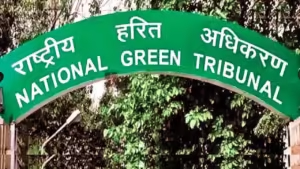The National Green Tribunal (NGT) is a specialized judicial body in India that was established under the National Green Tribunal Act of 2010. It has been set up to handle cases and disputes related to environmental protection and conservation.
Jurisdiction and Powers of NGT:
The NGT has original jurisdiction over matters related to environmental protection, conservation of forests, water bodies, air quality, and the enforcement of any legal right relating to the environment. It can hear cases involving violations of environmental laws, such as the Environment (Protection) Act, 1986, the Water (Prevention and Control of Pollution) Act, 1974, and the Air (Prevention and Control of Pollution) Act, 1981.
Functions and Responsibilities of NGT:
The primary function of the NGT is to adjudicate environmental disputes expeditiously. It hears cases filed by individuals, non-governmental organizations (NGOs), and government agencies concerning environmental violations, pollution incidents, and conservation efforts. The tribunal also has the authority to issue orders and directives for the prevention and remediation of environmental damage.
Background and Establishment:
The need for a specialized environmental tribunal in India arose due to the inadequacy of existing legal mechanisms in addressing environmental issues. Before the establishment of the NGT, environmental cases were often dealt with in regular courts, leading to delays and inefficiencies. The NGT was thus created to provide a dedicated forum for swift resolution of environmental disputes.
Composition and Structure:
The NGT consists of both judicial and expert members, ensuring a balanced approach to environmental adjudication. The tribunal is headed by a Chairperson, who is a retired Supreme Court judge, and comprises judicial members who are former High Court judges and expert members with specialized knowledge in fields such as environmental science, ecology, and economics.
Challenges and Limitations:

While the NGT has made significant strides in environmental adjudication, it faces certain challenges and limitations.
Complexity of Cases:
Environmental disputes often involve complex scientific, technical,
and legal issues, which can pose challenges for effective adjudication by the tribunal.
Limited Resources:
The NGT operates with limited financial and human resources,
which can sometimes impede its ability to handle the volume of cases effectively.
Enforcement Gap:
Despite its powers to issue orders and directives, the NGT’s
effectiveness depends on the enforcement capabilities of government agencies,
which may vary across different states and regions.

Conclusion :
India’s environment and promoting sustainable development. Its specialized expertise, speedy resolution, and proactive approach make it a critical institution for environmental governance. However, addressing the challenges it faces and strengthening its capacity are essential to realizing its full potential in protecting the environment and ensuring environmental justice for all.







